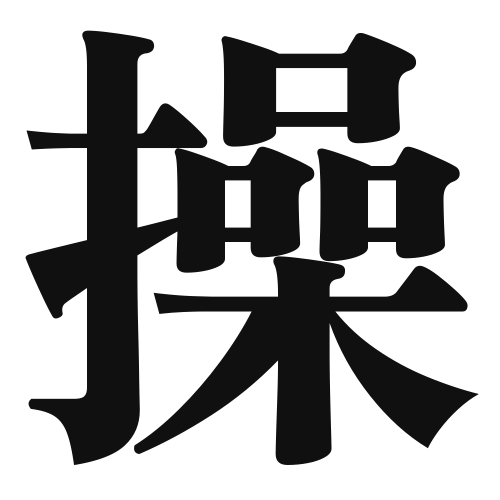1. Overview of Meaning
The kanji “操” (pronounced “sō” or “asobu”) primarily means “to operate,” “to handle,” or “to manipulate.” It can also refer to “skill” or “control” in various contexts.
2. Formation and Radical
Formation of the Kanji: The kanji “操” is a compound character that combines elements to convey its meaning. It consists of the radical for “hand” (手) on the left, indicating action or manipulation, and the phonetic component “操” (sō) on the right, which contributes to its pronunciation.
Radical: The radical of “操” is 手 (te), which relates to actions performed by hand, emphasizing the physical aspect of handling or operating something.
3. Examples of Usage
Common Words and Phrases: Some frequently used words that include “操” are:
- 操縦 (sōjū) – “to pilot” or “to control” (as in an aircraft)
- 操作 (sōsa) – “operation” or “manipulation” (as in operating machinery)
Example Sentences in Daily Conversation:
- この機械を操るのは難しいです。
(Kono kikai o ayatsuru no wa muzukashii desu.)
“Operating this machine is difficult.” - 彼は楽器を操るのが得意です。
(Kare wa gakki o ayatsuru no ga tokui desu.)
“He is skilled at playing musical instruments.”
4. Synonyms and Antonyms
Similar Kanji: A kanji with a similar meaning is “運” (un), which means “to carry” or “to transport.” While both involve handling, “操” emphasizes skillful manipulation, whereas “運” focuses more on the act of moving something from one place to another.
Opposite Kanji: An antonym is “放” (hō), which means “to release” or “to let go.” This contrasts with “操,” which implies control and handling.
5. Cultural and Historical Background
Relation to Japanese Culture: The concept of “操” is significant in various traditional Japanese arts, such as martial arts and music, where skillful manipulation is essential.
Proverbs and Idioms: One common saying is “操を守る” (sō o mamoru), which means “to maintain control” or “to uphold one’s skill,” reflecting the importance of mastery and discipline in Japanese culture.
